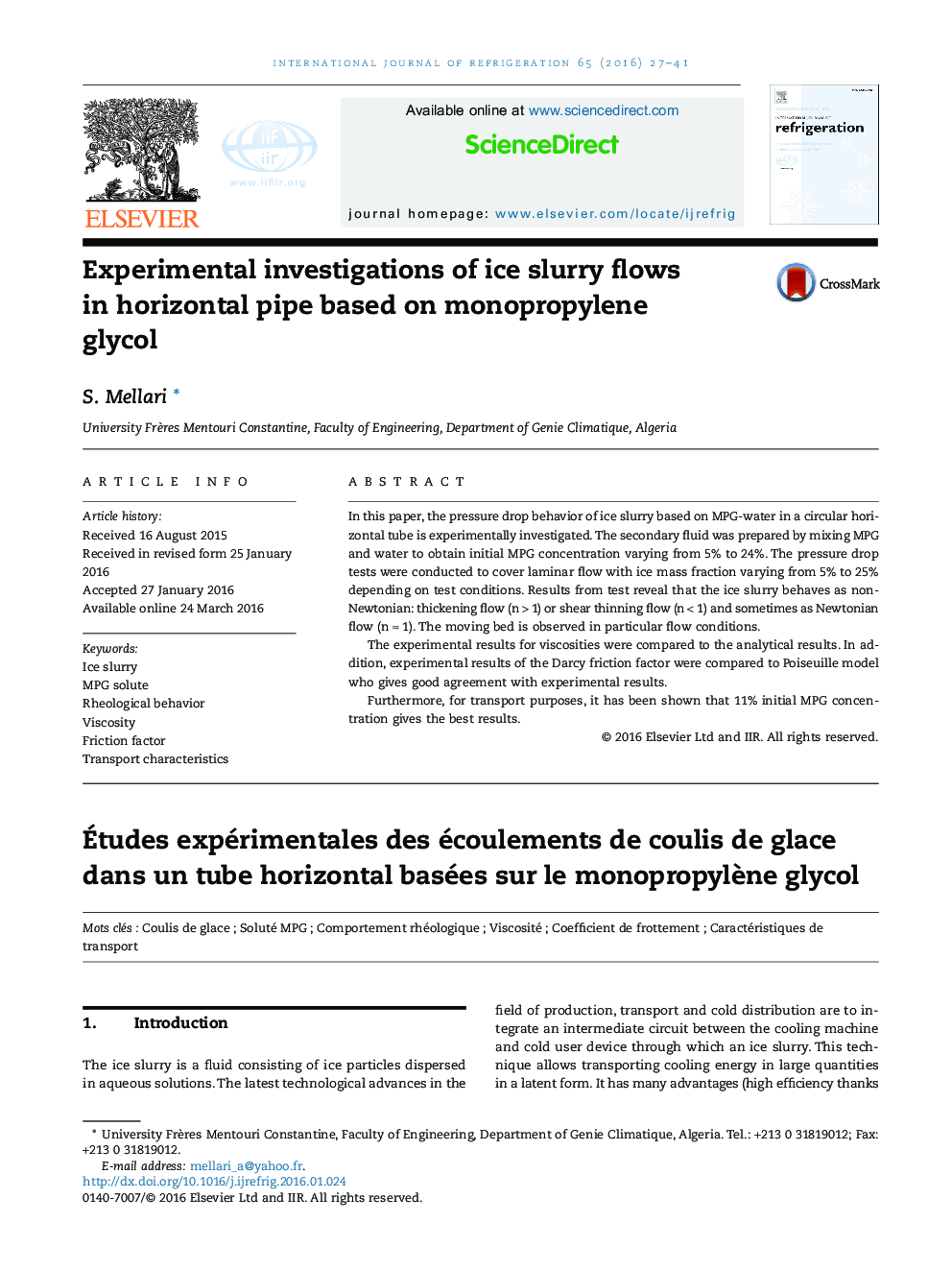| Article ID | Journal | Published Year | Pages | File Type |
|---|---|---|---|---|
| 786715 | International Journal of Refrigeration | 2016 | 15 Pages |
•The principles of capillary viscometer were applied to measure the mass flow, density and pressure drop.•The influence of ice mass fraction and initial concentration of MPG on the ice slurry behavior was shown.•The influence of ice mass fraction and initial concentration of MPG on the ice slurry friction factor was shown.•The influence of ice mass fraction and initial concentration of MPG on the ice slurry transport characteristics was shown.•Experimental results for viscosities were compared to the analytical expressions.
In this paper, the pressure drop behavior of ice slurry based on MPG-water in a circular horizontal tube is experimentally investigated. The secondary fluid was prepared by mixing MPG and water to obtain initial MPG concentration varying from 5% to 24%. The pressure drop tests were conducted to cover laminar flow with ice mass fraction varying from 5% to 25% depending on test conditions. Results from test reveal that the ice slurry behaves as non-Newtonian: thickening flow (n > 1) or shear thinning flow (n < 1) and sometimes as Newtonian flow (n ≈ 1). The moving bed is observed in particular flow conditions.The experimental results for viscosities were compared to the analytical results. In addition, experimental results of the Darcy friction factor were compared to Poiseuille model who gives good agreement with experimental results.Furthermore, for transport purposes, it has been shown that 11% initial MPG concentration gives the best results.
